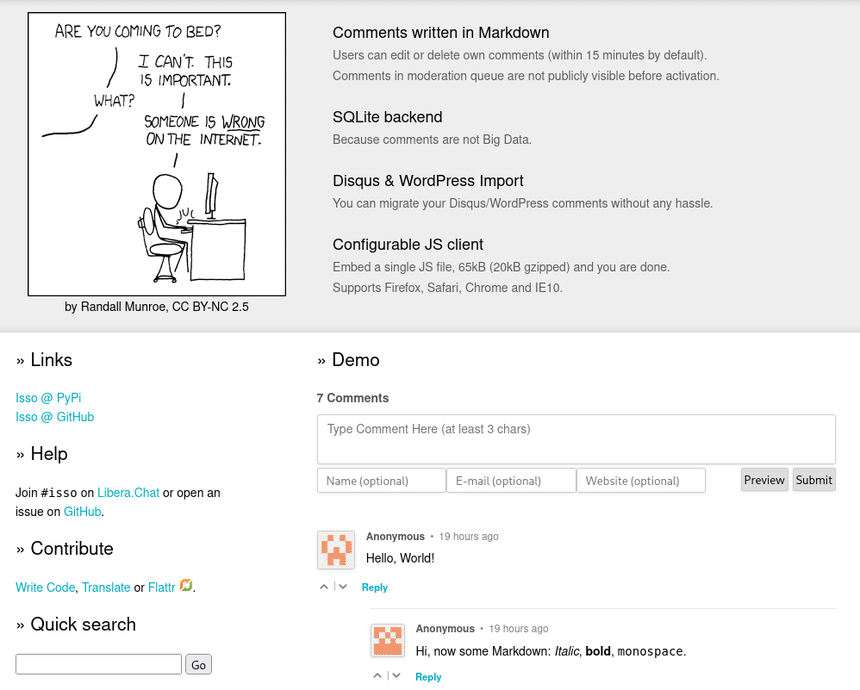I’ve previously implemented a series taxonomy in Hugo, but it only supported a single series per post and used intersect which is kind of slow.
Here is my improved implementation of a series taxonomy in Hugo 👇

I’ve previously implemented a series taxonomy in Hugo, but it only supported a single series per post and used intersect which is kind of slow.
Here is my improved implementation of a series taxonomy in Hugo 👇

Searching for a tool to keep track of IP addresses; I stumbled onto Netbox — and was blown away by what it could do 🤯 I could put everything there: racks, servers, patch panels, Wi-Fi access points, power distribution, network runs. Everything!

Comments. I’ve written about them before, two times — but here we go again.
Long story short; I’ve spent some time thinking about adding comments, and think it might be time to give it another try. Why now? As my traffic numbers have gone up, so has the emails from readers. I don’t get a lot — by any measure, but I do get some with very good insight about the post.
I’d like to share that knowledge, but reworking it into the article is not always so easy. With a comment section; they could be put on display 🙂

I’m hosting this blog on AWS S3 and Cloudfront. One disadvantage with S3 is that it doesn’t have a simple way of creating redirects — like Netlify, Firebase, or even Nginx.
But there is way; using the AWS CLI, put-object, and the x-amz-website-redirect-location metadata.
Here’s how 👇

This blog is built with Hugo — an open-source static site generator. Static websites require no server side processing, which makes them easier to host and opens up new hosting possibilities.
There are many options out there, but I deploy my website to AWS S3, using CloudFront to distribute it globally (aka. make it fast).
Here is the why and the how.